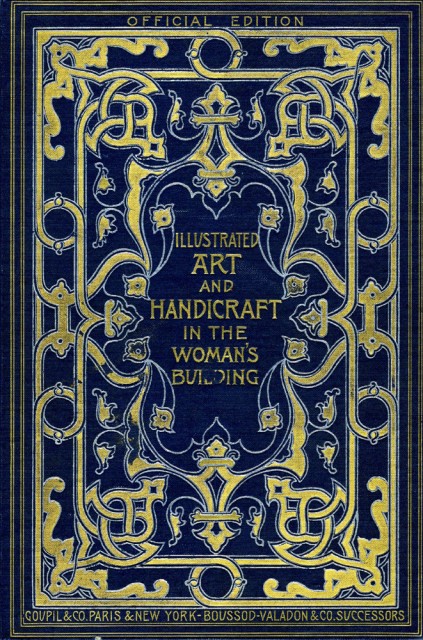Art and Handicraft in the Women’s Building of the World’s Columbian Exposition, edited by Maud Howe Elliot (1854-1948), noted author and daughter of anti-slavery activist Julia Ward Howe, consists of 30 articles by women on work and issues related to women as celebrated in the Women’s Building at the Chicago’s World’s Columbian Exposition in 1893.
The World’s Columbian Exposition, the popular and expansive World’s Fair promoting the growth of the host city of Chicago and commemorating the 400th anniversary of Columbus’s discovery of America, included a colonnaded women’s pavilion inspired by classical and Italian Renaissance styles, designed by Sophia Hayden. The pavilion displayed works highlighting women’s accomplishments in the arts, sciences, education, and industry, and was a venue for conferences on issues related to women. The plans for the building, exhibitions, and conference events were under the direction of the Board of Lady Managers, headed by Bertha Potter of Chicago, and included representatives from each state as well as from many foreign countries.
The illustrated essays within Art and Handicraft address three areas related to the Fair: the planning of the women’s pavilion and the architecture of building; contemporary issues (e.g., “Evolution of Women’s Education in the United States” and “Congresses in the Women’s Building”); and detailed descriptions of the exhibitions including handicraft and manufacture of women from foreign countries and displays on women in the arts, sciences, literature, and the applied arts. The decorative cover of the “official edition” is attributed to Alice C. Morse (1863-1961), an American book cover designer who was chair of the subcommittee for book covers for the Women’s Building. The blue plain-weave cloth cover is decorated with gold-stamped and silver-lined floral motifs in the style of patterns found on 16th century French bindings.

October 9, 1893 at the World’s Columbian Exposition was “Chicago Day,” created to commemorate the anniversary of the Great Chicago Fire of 1871. “Chicago Day” became the most highly attended day of the fair—open from May to October of 1893—with 716,881 visitors.
